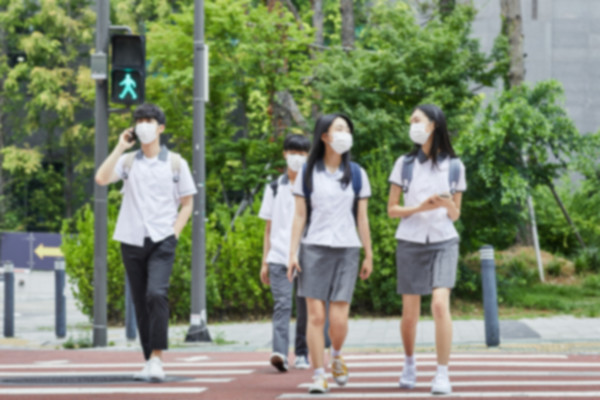A crisis marked by a surge in smoking and drinking among adolescents, coupled with a sharp decline in exercise, is unfolding in Korea, setting the stage for policy reforms aimed at reversing the deteriorating health behaviors of the nation's youth.
The Korea Disease Control and Prevention Agency (KDCA) released the findings of its Youth Health Behavior Panel Survey on Wednesday, a study that tracks the health behaviors of a cohort of 5,051 sixth-grade students over a decade from 2019 to 2028, following them until they reach their 20s. The recently released study involves the 2019-2023 period, offering a snapshot of the shifting landscape of adolescent health in Korea.

This panel study differs from traditional cross-sectional surveys by repeatedly surveying the same participants, allowing researchers to observe temporal relationships and identify determinants affecting changes in health behaviors.
Employing a mix of self-administered tablet surveys and home visits, the KDCA captured the evolving habits of these young individuals as they navigate the transition from childhood to adolescence. The survey’s goal is to decode the complex web of factors influencing youth health, from smoking and drinking to physical activity and diet.
The results paint a stark picture of increasing tobacco use among students, with a particularly alarming spike during the transition from ninth to 10th grade. This period marks a critical juncture, with a dramatic rise in the use of both liquid and heated tobacco products. Nearly 70 percent of new tobacco users began with flavored products, underscoring a pressing need for stricter regulations on these alluring new tobacco variants, the KDCA warned.
Another troubling trend is the role of liquid e-cigarettes as a gateway to traditional smoking. Among students who used multiple tobacco products, those who began with liquid e-cigarettes frequently transitioned to traditional cigarettes. Over 60 percent of those who started with e-cigarettes eventually favored conventional cigarettes, suggesting that liquid e-cigarettes may be an “entry point” to more entrenched smoking habits.
Simultaneously, the survey revealed a sharp rise in alcohol consumption among adolescents, with new drinkers, defined as “those who had never consumed alcohol before but had one or two sips during the survey period” by a Division of Climate Change Health Hazed spokesperson, peaking at 15.8 percent during their first year of middle school.
The reasons for this initial indulgence are varied: 48.9 percent cited family or relatives' encouragement, 19.7 percent were driven by curiosity, and 8.2 percent mistakenly believed alcohol to be a non-alcoholic beverage.
Physical activity rates have followed a troubling trajectory. The percentage of students engaging in at least 60 minutes of physical activity five or more days a week fell dramatically from 29.8 percent in the second year of middle school to 14.6 percent in the first year of high school. High-intensity physical activity rates exhibited a similar roller-coaster pattern, peaking in middle school before plummeting once again in high school.
"The data from this survey will be pivotal in shaping future youth health policies, including Health Plan 2030 and the Basic Plan for Student Health Promotion," said the KDCA. "We must focus on enhancing educational outreach and fortifying related policies to counteract these troubling trends."
These alarming trends are set against a backdrop of deteriorating family, school, and community environments. According to the KDCA, there has been a noticeable decline in family meals and in conversations with parents about smoking prevention, alcohol abstinence, and healthy eating habits.
Schools, too, are scaling back on smoking and alcohol prevention programs and nutritional education. Community efforts to promote tobacco-free environments are waning, while exposure to smoking and drinking in media has increased.
"The 2023 Youth Health Behavior Panel Survey serves as a crucial foundation for the policies we, along with related ministries and local governments, will establish to improve adolescent health,” said Jee Young-mee, Commissioner of the KDCA. “We plan to delve deeper into the social and environmental factors affecting health behaviors, involving individuals, families, and friends by the end of this year."
Related articles
- Cancer mostly affects older adults but ‘tongue cancer’ hits younger people
- [Interview] Navigating dementia and health through Korea’s cultural lens
- [Contribution] How to protect children from tobacco industry
- 'Study pressure, screen time exacerbate sleep deficit in Korean teens'
- State health insurer seeks to overturn tobacco ruling with more evidence
- Consumer group urges Assembly to close loopholes on youth e-cigarette use

